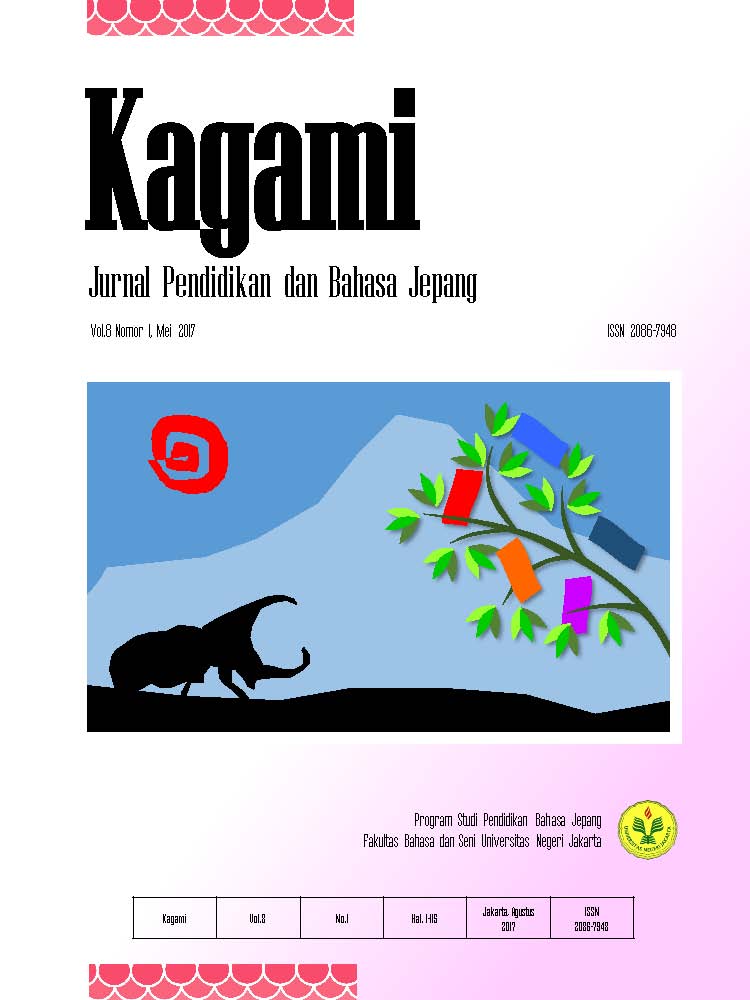Aspek Perfektif Verba Majemuk Owaru dalam Bahasa Jepang
Kata Kunci:
Aspect, Compound Verb, Owaru, PerfectiveAbstrak
The purpose of this study is to determine the meaning of the perfective aspect of and the structure of Japanese compound verbs ‘owaru’. The data used in this study were obtained from online newspaper, which analyzed using unified method that refers to the aspectuality theory. The result of the research show that verbs that attached to ‘owaru’ are continuative verbs (keizokudoushi) which contains ‘telik’ and ‘atelik’ meaning, and also have punctual verbs (shunkandoshi) which the activity of the verbs can be used continuatively. The meaning of the verbs show that the activity which done marked with another activity occurred, and the meaning of occurred activity were done intentionally by the agent (subject) without any relevance to the activity afterwards.
Referensi
Djajasudarma, T. Fatimah. 1999. Semantik 2. Bandung: Refika.
Himeno, Masako. 1999. Fukugoudoushi no Kouzou to Imi Youhou. Japan: Hitsuji.
Kindaichi, Haruhiko. 1989. Nihongo Doushi no Asupekuto. Tokyo: Mugi Shobo.
Mahsun, M.S. 2001. Metode Penelitian Bahasa (Edisi Revisi). Jakarta: Rajawali Pers.
Niimi, Kazuaki. Dkk. 1987. Gaikokujin no tame no Nihongo Reibun Mondai Shirizu 4 (Fukugoudoushi). Japan: Aratake Shuppan.
Nitta, Yoshio. 2007. Gendai Nihongo Bunpou 3: Asupekto, Tensu, kouhi. Japan: Kuroshio Shuppan.
Sudaryanto. 1992. Metode Linguistik: Ke Arah Memahami Metode Linguistik. Yogyakarta: Gajah Mada University Press.
--------------. 1993. Metode dan Teknik Analisis Bahasa. Yogyakarta: Duta Wacana University Press.
Sutedi, Dedi. 2003. Dasar-dasar Linguistik Bahasa Jepang. Bandung: Humaniora Utama Press.



